Is Coleslaw just as good as a pH meter? Plus the reasons you should use a pinless moisture meter
Is Coleslaw just as good as a pH meter? Plus the reasons you should use a pinless moisture meter |
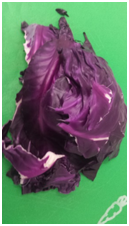 Is coleslaw just as good as a pH meter? Of course not, but it can get close!pH is a widely measured parameter. People involved in food safety, soil science, water quality monitoring, research and many other fields all have a requirement for measuring pH. A majority of them use digital pH meters, whether it be a simple pen tester, or a high grade bench meter, but is it possible to measure pH only with ingredients in the kitchen? | |||||||||||||||||||
Equipment
Method The 5 red cabbage leaves were finely chopped on a chopping board before being placed into a large jug. Boiling water was poured over the cabbage and left to sit until the pigment had leached out of the cabbage. Once the water looked sufficiently dark, the mixture was strained through a coffee filter into a clean dry beaker to remove the solid chunks of cabbage.  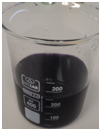 50mL samples of pH4, pH7 and pH10 were then poured into clean dry glasses. 5mL of the Cabbage juice solution was then added to each cup to give us a baseline reading and allow us to compare our future readings to a sample of a known value.  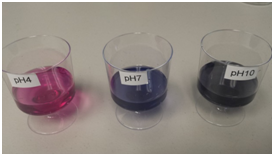 pH buffers before and after the addition of cabbage juice We then poured 100mL samples of liquids that we wished to test. These were: Lemonade, Laundry powder (2 teaspoons in 100mL of water), Vinegar, Tartaric acid (2 teaspoons in 100mL of water) and dishwashing liquid (2 teaspoons in 100mL of water). The colour of the resulting solution was then compared to the known values and an estimate of the pH was given. The actual pH of the solution was then recording using the EC-PHtestr30. Results Each of the solutions gave a noticeable change in colour once the cabbage juice was added. 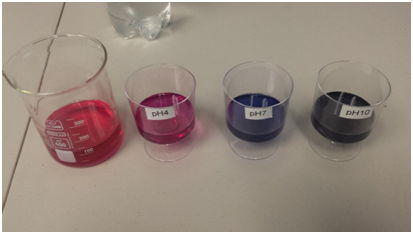 Lemonade appeared to give a deeper red colour than the pH 4 and was estimated to have a pH of 4> 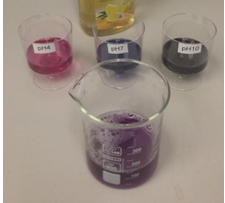 Dishwashing detergent gave a slightly purple colour so it was estimated to have a pH of around 7 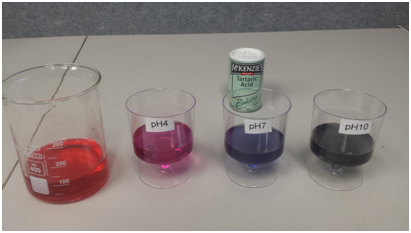 The tartaric acid solution also had a strong red colour and it was estimated to be below a pH of 4 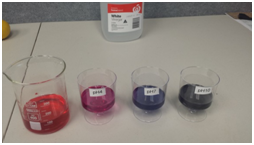 The vinegar had a similar colour to the Tartaric acid and it was estimated to be below a pH of 4 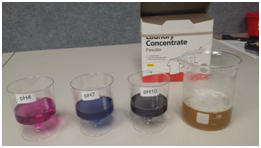 The laundry concentrate solution started off purple, but then went to a dark colour similar to the pH10 and then finished off on a yellowy colour. This solution was estimated to have a pH above 10
Discussion The experiment has shown that cabbage juice can be a useful indicator of the pH of a liquid solution. The results show that you can fairly successfully determine whether a sample is acidic, close to neutral, of alkaline. The accuracy of the measurement however is not high. For the Tartaric acid sample for example, the estimated reading was “less than 4” however the actual reading was 1.57. This has an error of at least 2pH values. Similarly, for the Laundry powder sample it was estimated to be above 10, but the actual result was closer to 11. It was also quite difficult to judge between a reading of 1.57 for tartaric acid and a reading of 3.47 lemonade. In summary, if you were in desperate need of a pH reading and you wanted to know whether a solution was acidic, neutral or basic then using cabbage juice as an indicator would be suitable. If however you need an accurate reading, a pH meter is a much better option. | |||||||||||||||||||
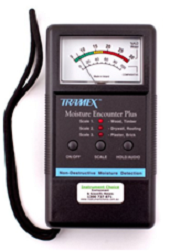 Why pin less moisture meters are better suited to undertaking moisture detection investigations in buildings.This month we will cover why pin less moisture meters are better suited to undertaking moisture detection investigations in buildings. The goal of moisture detection is to be able to identify areas of abnormally high moisture that has the potential to cause unwanted damage to the building or structure, through this the cause of the moisture can be rectified and the area bought back to the dry condition before the moisture intrusion occurred. In achieving this you want to do it in the most economical and efficient means possible with as little to no damage. A pinless moisture meter (also known as a non-invasive/impedance/capacitance meter) is better suited to undertaking these investigations due to the majority of materials within buildings themselves not being homogeneous (constructed of exactly the same material); this can include materials such as tiles, brick, gyprock and masonry. This means that specific moisture content cannot be obtained as there is no way of knowing the specific components that make up the material. This means that a comparative scale is used. What a non-destructive moisture detector will tell you is whether there is an area with higher moisture compared to the rest of the area you are investigating. This area should then be marked and further investigations carried out to determine possible causes. 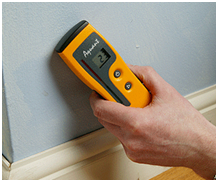 These instruments work by transmitting low frequency signals into the material being tested, measuring the change in impedance caused by the presence of moisture. The signal from the meter is sent to a depth of up to 30mm (dependant on the material being tested and the meter) detecting the presence of moisture well into the material as opposed to only obtaining a surface reading like you would if you were using a pin type meter. As a result, the non-destructive meter can be used to detect moisture behind walls, picking up any moisture well into the wall. As these instruments do not use pins and leave no damage to the surface being tested they make investigative work easy with no remedial work required once the measurements are conducted. Large areas such as a wall can be ‘scanned’ by moving the meter over the wall quickly and efficiently without any damage to the area you are testing. The best way to conduct investigations is by way of moisture mapping. Moisture maps are drawings of the affected rooms or areas with respect to the moisture levels for the relevant areas that make up the room. This can then be used to establish a baseline and to compare it once remedies have been applied to see if there has been an improvement. An example of a moisture map is below: 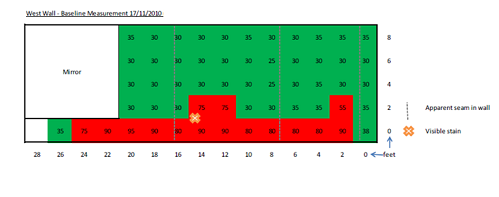 As the moisture map above shows it is clear that the visible stain is being caused by abnormally high moisture content occurring across the base of the wall. From here further investigations can be undertaken to establish how the moisture ingress is occurring. The meters that we recommend for these measurements are the Tramex MEP or MRHIII or the Protimeter Aquant or SurveyMaster. They are all high quality options that are well known within the building inspection profession. They are all pinless units that allow the user to scan over the surface and provide comparative readings that will allow the user to determine areas of higher moisture that need to be investigated. If you have any questions relating to moisture measurement or wish to discuss the most suitable meter for your requirements please feel free to contact one of our friendly Scientist by email or phone on 1300 737 871. | |||||||||||||||||||
